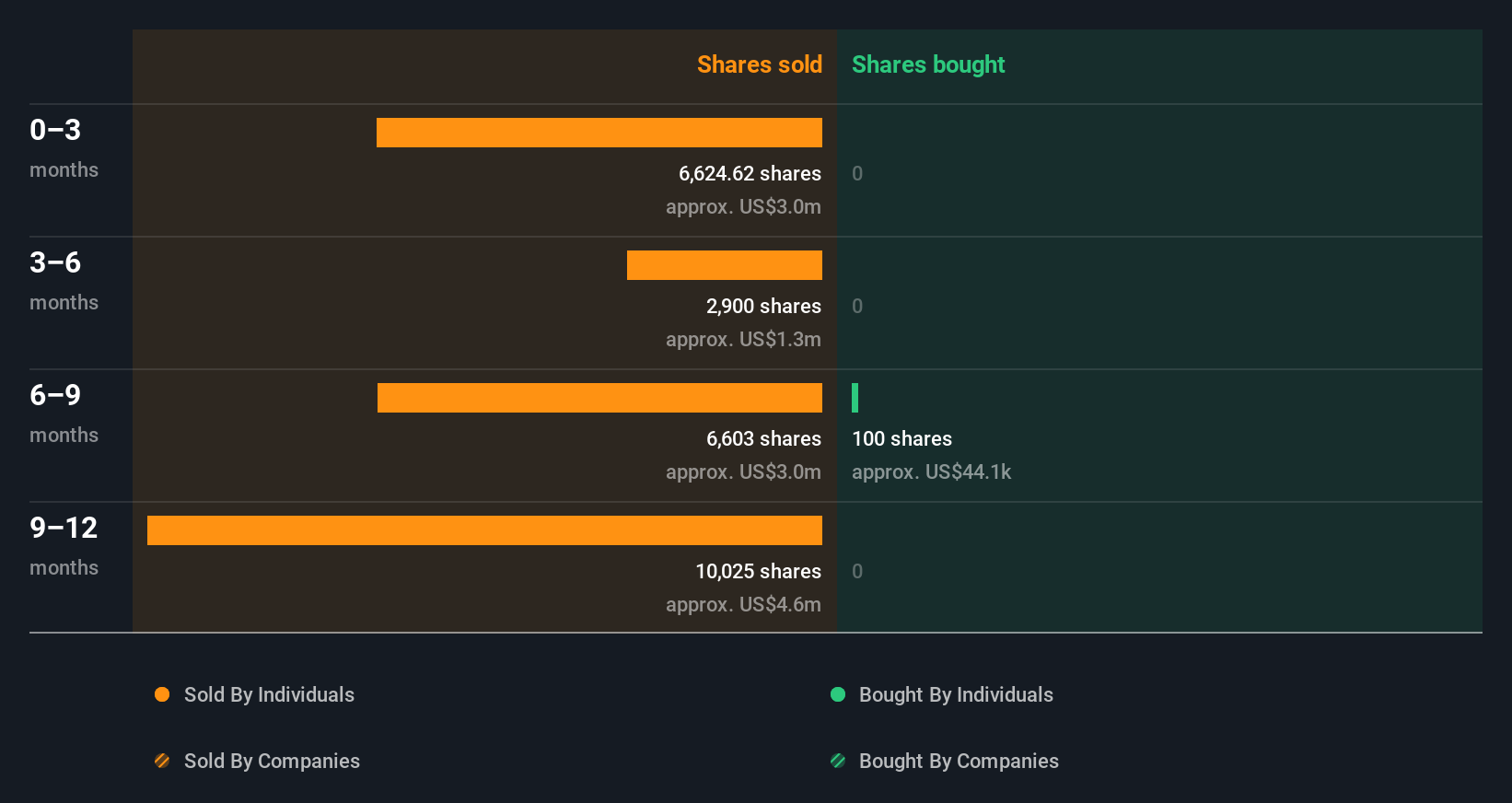
In the last year, many Linde plc (NASDAQ:LIN) insiders sold a substantial stake in the company which may have sparked shareholders' attention. Knowing whether insiders are buying is usually more helpful when evaluating insider transactions, as insider selling can have various explanations. However, shareholders should take a deeper look if several insiders are selling stock over a specific time period.
While we would never suggest that investors should base their decisions solely on what the directors of a company have been doing, we would consider it foolish to ignore insider transactions altogether.
Linde Insider Transactions Over The Last Year
Over the last year, we can see that the biggest insider sale was by the insider, John Panikar, for US$4.6m worth of shares, at about US$463 per share. So what is clear is that an insider saw fit to sell at around the current price of US$461. While insider selling is a negative, to us, it is more negative if the shares are sold at a lower price. Given that the sale took place at around current prices, it makes us a little cautious but is hardly a major concern.
All up, insiders sold more shares in Linde than they bought, over the last year. You can see a visual depiction of insider transactions (by companies and individuals) over the last 12 months, below. By clicking on the graph below, you can see the precise details of each insider transaction!
See our latest analysis for Linde

For those who like to find hidden gems this free list of small cap companies with recent insider purchasing, could be just the ticket.
Insiders At Linde Have Sold Stock Recently
The last three months saw significant insider selling at Linde. Specifically, insiders ditched US$3.0m worth of shares in that time, and we didn't record any purchases whatsoever. In light of this it's hard to argue that all the insiders think that the shares are a bargain.
Insider Ownership
Many investors like to check how much of a company is owned by insiders. A high insider ownership often makes company leadership more mindful of shareholder interests. Linde insiders own 0.2% of the company, currently worth about US$494m based on the recent share price. I like to see this level of insider ownership, because it increases the chances that management are thinking about the best interests of shareholders.

What Might The Insider Transactions At Linde Tell Us?
Insiders sold stock recently, but they haven't been buying. And our longer term analysis of insider transactions didn't bring confidence, either. On the plus side, Linde makes money, and is growing profits. While insiders do own a lot of shares in the company (which is good), our analysis of their transactions doesn't make us feel confident about the company. In addition to knowing about insider transactions going on, it's beneficial to identify the risks facing Linde. In terms of investment risks, we've identified 2 warning signs with Linde and understanding these should be part of your investment process.
If you would prefer to check out another company -- one with potentially superior financials -- then do not miss this free list of interesting companies, that have HIGH return on equity and low debt.
For the purposes of this article, insiders are those individuals who report their transactions to the relevant regulatory body. We currently account for open market transactions and private dispositions of direct interests only, but not derivative transactions or indirect interests.
Have feedback on this article? Concerned about the content? Get in touch with us directly. Alternatively, email editorial-team (at) simplywallst.com.
This article by Simply Wall St is general in nature. We provide commentary based on historical data and analyst forecasts only using an unbiased methodology and our articles are not intended to be financial advice. It does not constitute a recommendation to buy or sell any stock, and does not take account of your objectives, or your financial situation. We aim to bring you long-term focused analysis driven by fundamental data. Note that our analysis may not factor in the latest price-sensitive company announcements or qualitative material. Simply Wall St has no position in any stocks mentioned.